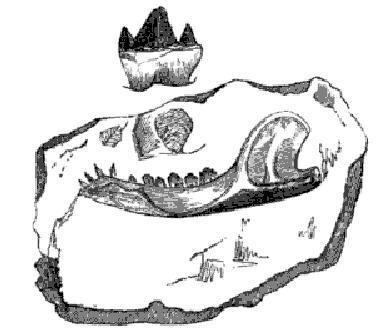Phylum Chordata | ||
 | ||
Genus PhascolotheriumOwen, 1838 Similar Eutriconodonta, Triconodontidae, Argentoconodon, Triconodon, Ichthyoconodon | ||
Phascolotherium is a genus of extinct triconodont mammal from the Middle Jurassic Stonesfield Slate of the United Kingdom.
Discovery
Phascolotherium was one of the first mammals described from Mesozoic-aged rocks. It was discovered, alongside Megalosaurus, by the famous British paleontologist Reverend William Buckland, from the Stonesfield Slate of Oxfordshire, England. Buckland described it in 1824 as "not less extraordinary" than the dinosaur, but it was the larger fossil reptile that captured public imagination. To this day Phascolotherium remains overlooked by all but palaeontologists. Buckland showed the fossil to the exceptional comparative anatomist, Georges Cuvier, who incorrectly identified it as a marsupial. It was therefore originally named Didelphis bucklandi, and thought to be an ancestral opossum. The famous paleontologist Richard Owen later recognized the Stonesfield fossils as being distinct from opossums, so he erected the new genus Phascolotherium for "D." bucklandi.
